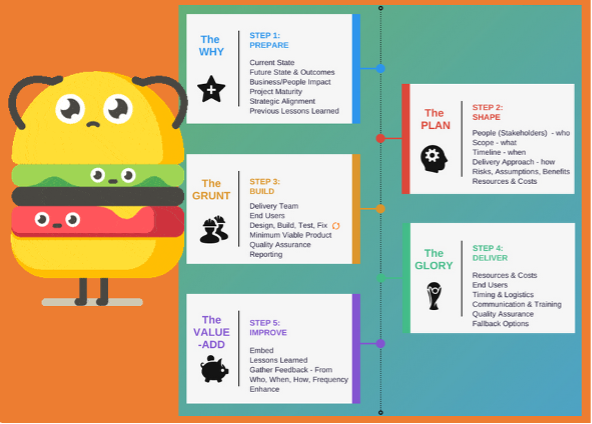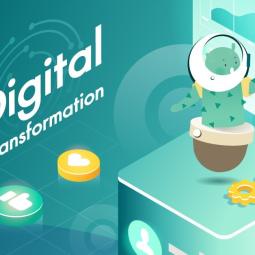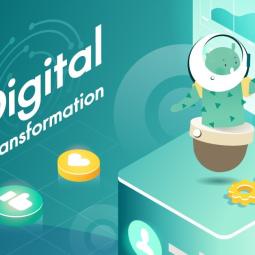Setting up digital transformation projects well from the start can save a lot of heartache and – potentially – thousands of dollars.
The current rate of failure of projects that require organisational change hasn’t changed much in over 30 years and is still sitting at around 70%.
That means there are still too many projects that don’t end up delivering at all, cost way more than budgeted for, or don’t deliver the value anticipated. That’s a lot of money being poured down the drain with very little to show for it. Few organisations can afford to do this, especially those already on a tight budget.
Digital technology change in any organisation can be risky, even in organisations with solid digital capability and project experience. For organisations with little experience implementing new technology or limited access to resources, it can feel very daunting. And sometimes it’s difficult to know where to start or how to make it a success.
There are many reasons why digital technology change projects fail, but if you know what to look out for and you set your projects up right from the start, you can give your organisation the best chance of delivering success.
What makes digital transformation projects fail?
- Ego and politics - Don’t let personal gain or opinions get in the way of delivering the right solution for the organisation.
- Misalignment with strategic direction - If the digital technology doesn’t fully support your organisation’s objectives, it will prevent you from achieving your goals and getting the return on investment you need.
- Doing too many things at once or over-committing - Quality and people will suffer. Your teams will get overwhelmed and the risk of burn-out and/or change fatigue will become very real. Focus your energies where your priorities are.
- Lack of foundational work - A massive driver of budget overruns. It can be very tempting to rush into delivery, to do something new and exciting, but take a breath before you start and do the groundwork first.
- Lack of executive support - When the chips are down, if the project doesn’t have the right support, it will get overlooked. Funds and/or resources may get diverted. This often goes hand-in-hand with misalignment with strategic direction.
- Unrealistic expectations, specifically timeframes and budget - Just because you want to deliver by a certain date or within a certain budget doesn’t mean that you can. The worst thing to do is over promise and under deliver.
- Too much focus on technology - If you are delivering technology for technology’s sake or just because you know another organisation using the same technology and it is not targeted at getting the right outcomes for your organisation and its people, it will fail.
What helps digital transformation projects succeed?
- A common goal - All those involved in the project need to be aligned with the same agenda. Create a high-level scope document to get everyone on the same page.
- Strategic alignment - The solution needs to support what the organisation is trying to achieve as a whole. Create a project plan to articulate this.
- Collaboration, teamwork and engagement - Across the board, from top to bottom, you need fully engaged people working proactively together. Communicate, communicate, communicate! Create a stakeholder matrix so you know who you are communicating with.
- Proper preparation and planning - Don’t underestimate the value of spending quality time upfront, looking at where you are now and where you want to be, what you want to achieve by doing the project and how you are going to do it. Have a solid budget forecast and a clear requirements document.
- Access to Subject Matter Experts (SMEs) - A project team needs to have regular contact with those who know your business or the specific area of the business intimately. This will have impact on your business-as-usual activities. Consider backfilling roles, if possible, or allowing more time for a project if capacity is tight.
- Strong leadership - Make sure you have people with the right skills and experience. When the going gets tough, you need someone to take responsibility and accountability. Having a clear and well-communicated timeline and taking the time to document risks and issues will help you be realistic.
- Make it realistic and achievable - Don’t be completely constrained as a degree of flexibility is necessary, but it is critical that you can actually deliver what you are setting out to do. Consider capacity, expertise, risk appetite, funding. Keep checking how you are tracking and communicating widely with a project status report.
Structure and control do matter
Regardless of how you choose to manage your digital technology change, you will need some sort of structure and control to make sure you can keep on top of it.
Picture a burger - the fun, enticing goodness is in the middle, but if you don’t have a bun to hold it together, it will collapse and get very messy! You need a solid top and bottom (beginning and end), as well as quality fillings, to be able to get the most out of it. Whether you muddle your way through, use Agile, Waterfall, W-Agile methodologies or anything in between, this framework is designed to provide you with some considerations for each stage of a technology change project.
The burger framework

The WHY
Step 1: Prepare
Document and understand:
- The current state
- The outcomes you are looking for in the future state
- Business and people impact
- Strategic alignment
- Previous lessons learnt
The PLAN
Step 2: Shape
Define and document:
- Stakeholders
- Scope
- Timeline
- Delivery approach
- Risks, assumptions, benefits
- Budget and resources
The GRUNT
Step 3: Build
Factor in the following:
- Delivery team
- End users
- Design, build, test, fix
- Minimum Viable Product
- Quality Assurance
- Reporting
The GLORY
Step 4: Deliver
Factor in the following:
- Resources and costs
- End users
- Timing and logistics
- Communication and training
- Quality assurance
- Fallback options
The VALUE ADD
Step 5: Improve
Consider:
- Embedding into the organisation
- Lessons learnt
- Gather feedback from users
- Measure results
- Plan for enhancements
Design your solution around people and outcomes
Design the solution with all users – customer and employees – in mind, as they are the reason you need the tool in the first place. Even digital technology that you might think has nothing to do with customers, employees or end users has some sort of impact on how you provide your products and services.
Think of technology as an enabler – it will never be the silver bullet.
For example, databases exist to maintain and extract information to help you run your organisation better. They are not just repositories of data. They need to be designed for people to be able to pull information out of them quickly, easily and in a usable format.
A contact centre exists to enable staff to respond quickly and efficiently to queries from living, breathing human beings, who have needs and expectations. They are tools to help you create positive experiences for all those involved and to produce data that the organisation can use to regularly improve those experiences. It is not just a piece of technology that is able to receive a call and route it to someone who may or may not be able to respond appropriately.
Technology is amazing. It is moving so fast and can bring incredible results when delivered in the right way. But don’t let it be your master. It is just an enabler. Take control of it and use it to your advantage. Understand why you need it, how it will impact your organisation and what benefits it can bring to you.
Take the time to deliver the right solution, in the right way and you will be reaping the benefits way beyond go-live day.
Read next:
10 steps to create a digital transformation strategy roadmap





Status message
Thanks for rating this guide.